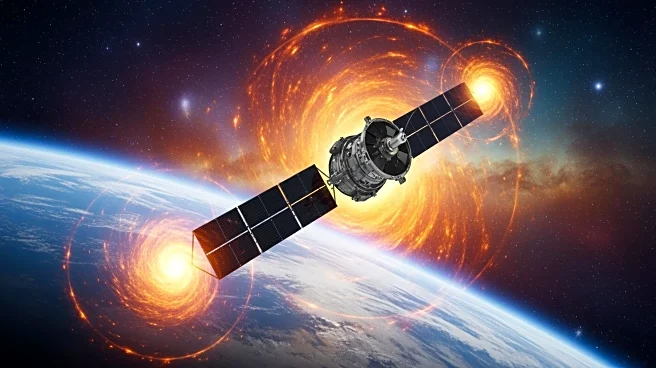What's Happening?
SpaceX's Starlink and other satellite constellations are increasingly vulnerable to solar storms, which can disrupt their operations. With over 10,000 satellites in orbit, solar storms can cause significant
altitude changes and network outages. Research indicates that during a solar storm in May 2024, Starlink satellites experienced altitude drops and communication disruptions. The growing number of satellites exacerbates the risk of collisions and operational challenges during solar activity, highlighting the need for improved predictive models and mitigation strategies.
Why It's Important?
The susceptibility of satellite constellations like Starlink to solar storms poses risks to global communications infrastructure and satellite navigation systems. As the number of satellites increases, the potential for disruptions and collisions grows, impacting internet services and satellite-dependent technologies. Understanding and mitigating these risks is crucial for maintaining reliable communication networks and ensuring the safety of space operations. The findings underscore the importance of developing robust space weather prediction models and adaptive satellite technologies.
What's Next?
As solar activity continues to pose challenges, satellite operators may need to invest in advanced technologies and strategies to mitigate the effects of solar storms. Collaboration between industry and research institutions could lead to improved predictive models and adaptive systems. The growing satellite population will require enhanced coordination and regulatory frameworks to manage space traffic and prevent collisions. Stakeholders will likely focus on developing resilient infrastructure to safeguard against future solar events.











